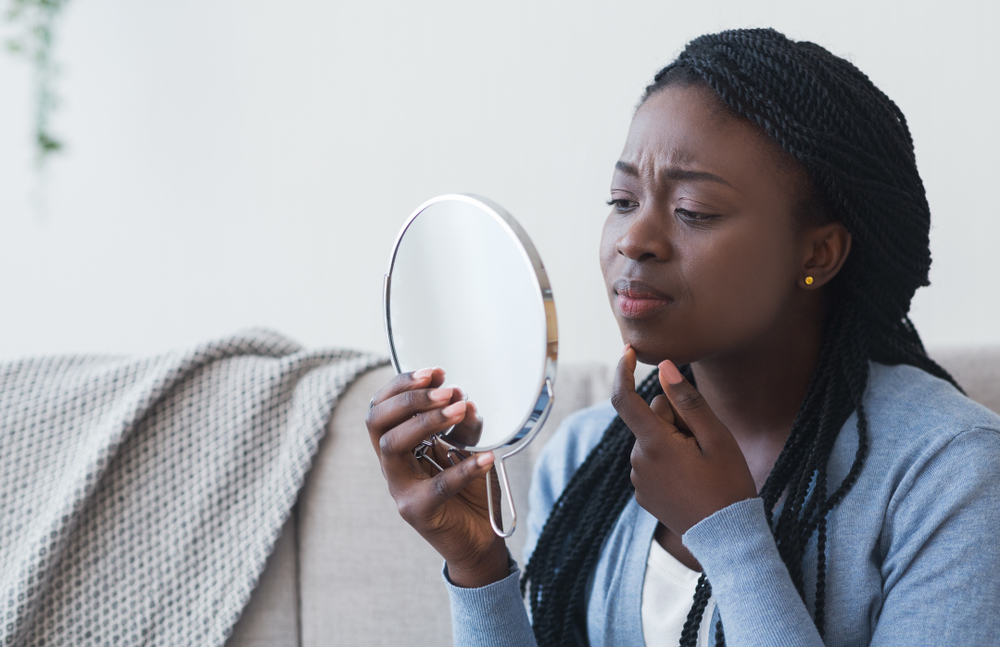Keloids are more than just a cosmetic concern; they can be a source of discomfort and emotional distress. For Black people, the tendency to develop keloids is notably higher, a fact that has both cultural and biological implications. We’ll delve into the primary causes of keloids on Black skin, shedding light on the factors that contribute to this condition and how they impact the community.
What are keloids?
Keloids are raised, thickened scars that extend beyond the boundaries of the original wound. Unlike regular scars — which fade over time — keloids often grow larger and can persist indefinitely. They can appear on any part of the body but are most commonly found on areas such as the chest, shoulders, earlobes and cheeks.
The formation of keloids is a result of the body’s overactive healing response. When the skin is injured, the body produces collagen, a protein that helps in wound repair. In some cases, this process goes into overdrive, leading to an excess of collagen that forms a keloid.
The role of genetics in keloid formation
One of the most significant factors in the development of keloids is genetics. Black folks are more predisposed to developing keloids, with studies showing that people of African descent are 15 times more likely to experience keloid formation than those of other races. This heightened susceptibility is believed to be linked to genetic factors that regulate the skin’s healing process.
Keloid formation is thought to be inherited in an autosomal dominant pattern, meaning that a single copy of the altered gene in each cell is sufficient to increase the risk of keloid formation. This genetic predisposition explains why keloids often run in families and why Black people are particularly vulnerable to this condition.
Skin trauma and keloid development
Skin trauma is another primary cause of keloid formation. Even minor injuries — such as acne, insect bites, piercings or surgical incisions — can trigger the development of keloids in susceptible individuals. The skin’s response to injury is typically to heal, but for those predisposed to keloids, this healing process can go awry.
The increased collagen production that characterizes keloid formation can be particularly pronounced in Black skin due to its natural composition. Melanin-rich skin tends to produce more collagen during the healing process, which, while beneficial for wound repair, can also lead to an overproduction that results in keloids.
The impact of hormonal changes
Hormonal changes can also influence the development of keloids. Some Black people might notice that keloids become more pronounced or develop during periods of hormonal fluctuations, such as puberty, pregnancy or menopause. These changes can exacerbate the body’s healing response, leading to the formation of keloids.
Research suggests that the presence of certain hormones, particularly estrogen, may play a role in the excessive collagen production seen in keloid formation. This connection between hormones and keloids underscores the complexity of the condition and highlights the need for a personalized approach to treatment.
Inflammation and keloid formation
Inflammation is another critical factor in keloid development. Black skin — which is more prone to inflammatory conditions such as acne and eczema — might experience more frequent keloid formation as a result. Inflammation triggers the body’s healing process; in those predisposed to keloids, this can lead to the excessive collagen production that forms keloids.
Moreover, the chronic nature of inflammatory conditions can result in repeated cycles of injury and healing, increasing the likelihood of keloid formation. This cycle can be particularly challenging to manage, as it often requires addressing both the underlying inflammation and the keloid itself.
Cultural and emotional impact of keloids
The presence of keloids on Black skin goes beyond physical appearance — it can have a profound cultural and emotional impact. In many African and African American communities, skin health is closely tied to cultural identity and self-esteem. The visibility of keloids can lead to feelings of self-consciousness, affecting social interactions and overall quality of life.
For some, keloids may also carry a stigma, particularly when they are located on visible areas such as the face or neck. This stigma can lead to emotional distress and a reluctance to seek treatment, further exacerbating the condition.
Managing and preventing keloids
While keloids can be challenging to manage, understanding their causes is the first step in preventing and treating them. For Black individuals, taking proactive measures to protect the skin from injury and inflammation is crucial. This includes using gentle skin care products, avoiding unnecessary piercings or tattoos and seeking early treatment for any skin injuries.
In cases where keloids have already formed, there are several treatment options available. These include corticosteroid injections, laser therapy and surgical removal. However, it’s important to note that keloids have a high recurrence rate, even after treatment, so ongoing care and monitoring are essential.
Keloids and confidence
Keloids on Black skin are a complex condition influenced by a combination of genetic, hormonal and environmental factors. Understanding the primary causes of keloids can help individuals take preventive measures and seek appropriate treatment when necessary. By addressing both the physical and emotional aspects of keloid formation, Black individuals can better manage this condition and maintain healthy, confident skin.
In the journey to better skin health, it’s essential to recognize the unique challenges that keloids present for Black people. With the right knowledge and care, it is possible to minimize their impact and enhance overall well-being. However, beauty blogger and face support specialist Sarah Fremgen told Essence, the best way to handle keloids is with confidence.
“Scars are not a struggle, they’re a statement,” Fremgen stated. “I would rather my face give people something to think about, rather than something to like.
















